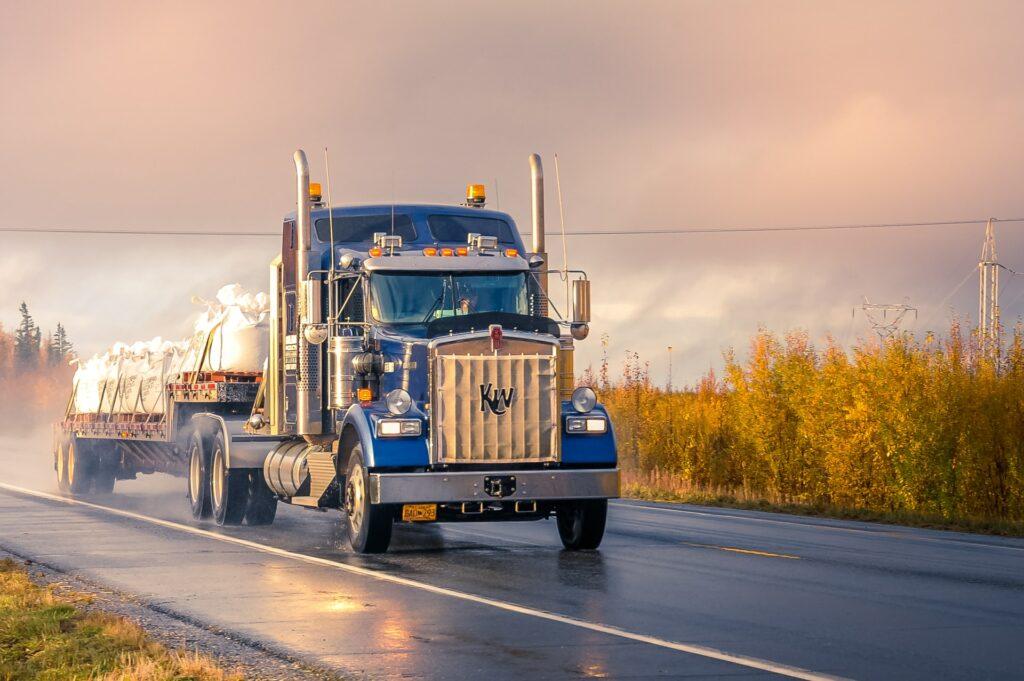
There’s a whole number of different types of trucks and trailers built for commercial use. All tractor trailers require that the operator holds a commercial driver’s license or CDL for short. In this article, we’ll cover the extensive list of freight trailers and their applications.
Various truck manufacturers develop trucks that differ in performance. Each type of trailer and truck is different from the next and has numerous applications and weight limits, so while this list is meant to be an overview, this should be taken as a guideline.
When considering the total load weight, it’s important to consider both the weight of the trailer and the weight of the freight being shipped. Add both the weight of the trailer and weight of the freight to get your load weight. Not all containers are created equal, and you need to find the right trailer for your application. If you’re moving a 10-foot tall bulldozer or moving gravel, you don’t want to use a flatbed.
It’s also important to take into judgment the width of your load. If your load is wider than the legal limit you’ll be required to gather additional permits and plan your entire route from start to finish. It’s critical to gather all the necessary documents beforehand and take care of all permitting before your driver even arrives with the trailer. You don’t want any DOT fines. They’re expensive and a general pain. Plus your driver can get in trouble if all the permits are not correct.
Types of trailers
1. Flatbed Trailer
Flatbed trailers are some of the most common types of trailers. Flatbed trailers are common mainly because of their versatility. Flatbeds can be utilized for everything from steel coils to lumber. They have a maximum weight limit of 48,000 pounds and their lengths range from 48ft to 53ft. The maximum width for legal operation is 8.5 feet, and the maximum height is 8.5 feet measured from the surface of the bed. The standard height of a flatbed is usually 60 inches off the ground. They are often used for shipments of oversized vehicles or motorcycles.
The flatbed trailer is an open container, meaning that there’s no containing box covering the cargo being shipped. Instead, the driver must know the process of tarping a flatbed. They’re completely level so loading and off-loading is a whole lot easier. Also, they can be unloaded from the top with a crane and even by the sides with other types of equipment depending on the cargo you’re carrying.
2. Dry Vans
Dry vans, otherwise known as enclosed trailers, are some of the most common freight containers for shipping cargo on the interstate. They’re a flatbed with a box around it. It’s a weatherproof way to keep the load in a dry environment.
Often grocery stores will use dry vans to ship goods such as clothes, food, and electronics. The freight materials are stacked on pallets, and the trailer is commonly unloaded with a forklift or a pallet jack.
The maximum weight limit for a dry van is 42,000 pounds. Sometimes the upper weight limit is 45,000 pounds depending on the capabilities of the trailer. They range from 48 feet to 53 feet and are most commonly unloaded from the rear, though some can be unloaded from the side.
3. Refrigerated Trailer
Refrigerated trailers are primarily dry vans that are insulated and have a cooling system to keep the enclosed goods fresh. This type of trailer is mainly used for food such as frozen foods and ice creams. Sometimes pharmaceuticals are shipped via reefers.
Furthermore, the essential components of a reefer are a compressor, condenser, and evaporator. Within the enclosed container, the entire system is contained.
The maximum weight for refrigerated trailers is the same as dry vans, but they have a maximum legal width of 8.2 feet and a maximum legal height of 8 feet.
4. Lowboy Trailers
The Lowboy trailer, also known as a double drop, low bed, or float trailer, is much closer to the ground than any other trailer type.
The lowboy trailer is essentially for shipping heavy equipment that are taller than legal height for other trailers. Often these are used for heavy duty construction equipment. These trailers can haul anywhere from 40,000 to 80,000 pounds depending on the number of axles. To haul 40,000 pounds and you’ll require two axles on the trailer. Lowboy trailers may require addition permits to operate and any state or municipal regulations should be strictly followed.
The maximum well length is 29.6 feet, but could be as low as 24 feet depending on the municipality. The maximum height is 18 to 25 inches and the maximum legal width for any lowboy is 8.5 feet.
If your load is oversized, you will have to obtain additional permits. The real bread and butter of the lowboy trailer reside in the maximum 12-foot freight height and the overall load height at 14 feet. These are the workhorses of the shipping world.
5. Step Deck Trailers
Step deck trailers are remarkably similar to flatbed trailers with the only legal difference being that the maximum freight height is 10 feet. They’re designed to carry things that flatbed trailers can’t. This is usually because of height restrictions. Essentially step deck trailers are flatbeds that allow you to squeeze an additional two feet of freight height into your load.
6. Extendable flatbed trailers
Extendable flatbed trailers are exactly what they sound like: They’re flat beds that can stretch from 43-foot average to 80 feet long. They’re built to support long loads, so there’s no real worry about the freight hanging off the edge of the trailer.
The maximum weight limit for these extendable flatbed trailers is 43,000 pounds, and the rest of the legal requirements stay the same as a regular flatbed.
6. Stretch Single Drop Deck Trailer
These trailers are specifically designed to carry loads that are far longer than the standard drop deck trailer. They provide both support and additional length to prevent overhang. They have a maximum weight limit of 45,000 pounds and have a maximum legal length of 35 to 63 feet depending on the municipality.
Be sure to follow all regulations, especially when using trailers that deviate from the norm. They have a legal freight height of 10 feet and a legal width of 8.5 feet.
7. Removable gooseneck trailers (RNG)
These trailers are excellent for carrying both tall and heavy loads. They’re able to carry up to 150,000 pounds depending on the number of axles your trailer has. They can range anywhere from three axles all the way up to 20 axles.
The maximum legal well length of an RNG trailer is 29 feet, and the max legal freight height is 11.6 feet. They have a max width of 8.5 feet, as is the standard with most trailers. Should you be above 8.5 feet in width you will have to acquire additional permits.
8. Specialty trailers
Specialized trailers are built specifically for a type of product to be moved. They’re used in hauling fuel to other types of liquids. Specialty trailers are usually built to specification and to haul hazardous materials. The requirements for specialty trailers are too deep to get into this article, but they have strict regulations. Specialty trailers can be used to pull up to 200,000 pounds.
If your load is a hazardous material, your driver will have to have a specific permit and license to be able to tow the load, and often the cost is higher than moving traditional freight. There’s no way to get around the additional requirements, and it’s a good idea not to try. Cutting corners with a hazardous material haul can result in a huge cost in both health and money. It’s worth it to invest the additional money, and no freight company worth their salt would willingly move a load unless it’s 100% insured.
9. Sidekit trailers
These trailers are most often equipped with a side of wood paneling and are used to haul loads that aren’t packed, like gravel, dirt and other materials that never need to be packaged. Their maximum width is 8.2 feet, and their max height is 8.6 feet. Side kit trailers are essentially flatbed trailers with a 4-foot side attached to the deck of the trailer. Their maximum load is 45,000 pounds.
10. Extendable double drop trailers
These containers are used to carry items that are extremely long that can’t be transported by a regular double drop trailer. They’re made to support the load and handle the excessive length. They usually have two or three axles and range from 29-50 feet with a maximum load height of 11.6 feet. The most common things to be carried on extendable double drop trailers are construction equipment and freight containers.
11. Stretch RNG trailers
These trailers are used to carry loads that are too long for regular removable gooseneck trailers. They can carry loads as small as 42,000 pounds to loads of 150,000 pounds. With a heavier load, more axles will be required, but the absolute minimum is three shafts. The main deck of these trailers ranges from 29 feet to 65 feet. They have a load height 11.6 feet and a width of 8.5 feet. These containers are used to carry loads of excessive height and excessive weight.
12. Conestoga trailers
These trailers are essentially dry van trailers that have a rolling tarp to cover the goods enclosed in the trailer. They have a length that ranges from 48 to 53 feet a maximum legal width of 8.2 feet and a maximum height of 8 feet. The roll top is often made of a heavy duty plastic, rubber or canvas. It’s extremely durable but is meant to protect goods that won’t get damaged with some exposure to the elements. It’s impossible to guarantee that no water will get through when traveling on the highway.
13. Power only trailers
These trailers are used to tow other trailers, and the legalities and requirements differ from state to state. Check your route and gather any permits required to use such trailers. You should strictly adhere to and state and regulations regarding power only trailer.
14. Multi-car trailers
These are technically specialty carriers, but they’re so common that it’s important to mention them. These have varying requirements based on what state you’re in, but they can carry anywhere from two vehicles all the way up to eight cars. When carrying more than two vehicles, the chances are that they will be double decker trailers. The height is not to exceed the 11.6 feet of most other oversized load trailers because of overpass heights.
When using a multi-car trailer to ship your new vehicles you should have the cars thoroughly prepped. Once the vehicles are on the trailer, your driver will secure everything and triple check that the vehicle will remain in place for the haul.
Know your trailer types
When ordering a trailer, be sure to know the dimensions of your load and the total weight. No one wants a situation that arises where you’ve got at a driver with a trailer that’s unusable for your load. If your load is oversized or above the legal limits, you’ve got a couple of options. You could split the load onto multiple trailers or gather permits and acquire the required escorts to transport your oversized load. A good example of this would be moving a mobile home. Many municipalities require permits and either police or road escort.
It’s important to know what kind of trailer you want to use, too. You can’t use a flatbed trailer for electronics as they’d be exposed to the elements. It’s a good idea to order a dry van trailer for loads that are fragile or require protection from the weather. If you’re transporting ice cream, a dry van wouldn’t be the best option, either. Using a refrigerated trailer would be ideal for that situation. If you have any questions about what type of trailer you’ll need to transport the load, your freight broker should be able to point you in the right direction.
Once your freight is loaded onto the trailer, your driver will secure everything and double check that everything is in its proper place. He will go over the trailer and all of the axles. He’ll take a look at his tractor and ensure it’s in tip-top shape to prevent delays! If your driver doesn’t do this, It’s a good idea to remind him, after all, it is your cargo.
Picking a reputable freight company can make this venture a lot less stressful. A good transportation company will be able to help you through all of the details, from permitting all the way to route planning and loading. If you’ve got any questions they should be able to give you the answer, and if they don’t know it off the top of their head they should be able to get it to you as soon as possible. Picking a company that’s been around for a while and has high reviews will make the stress of hauling freight a lot more manageable.
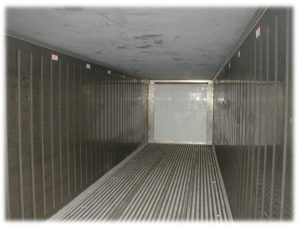
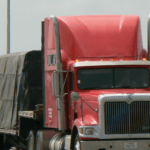
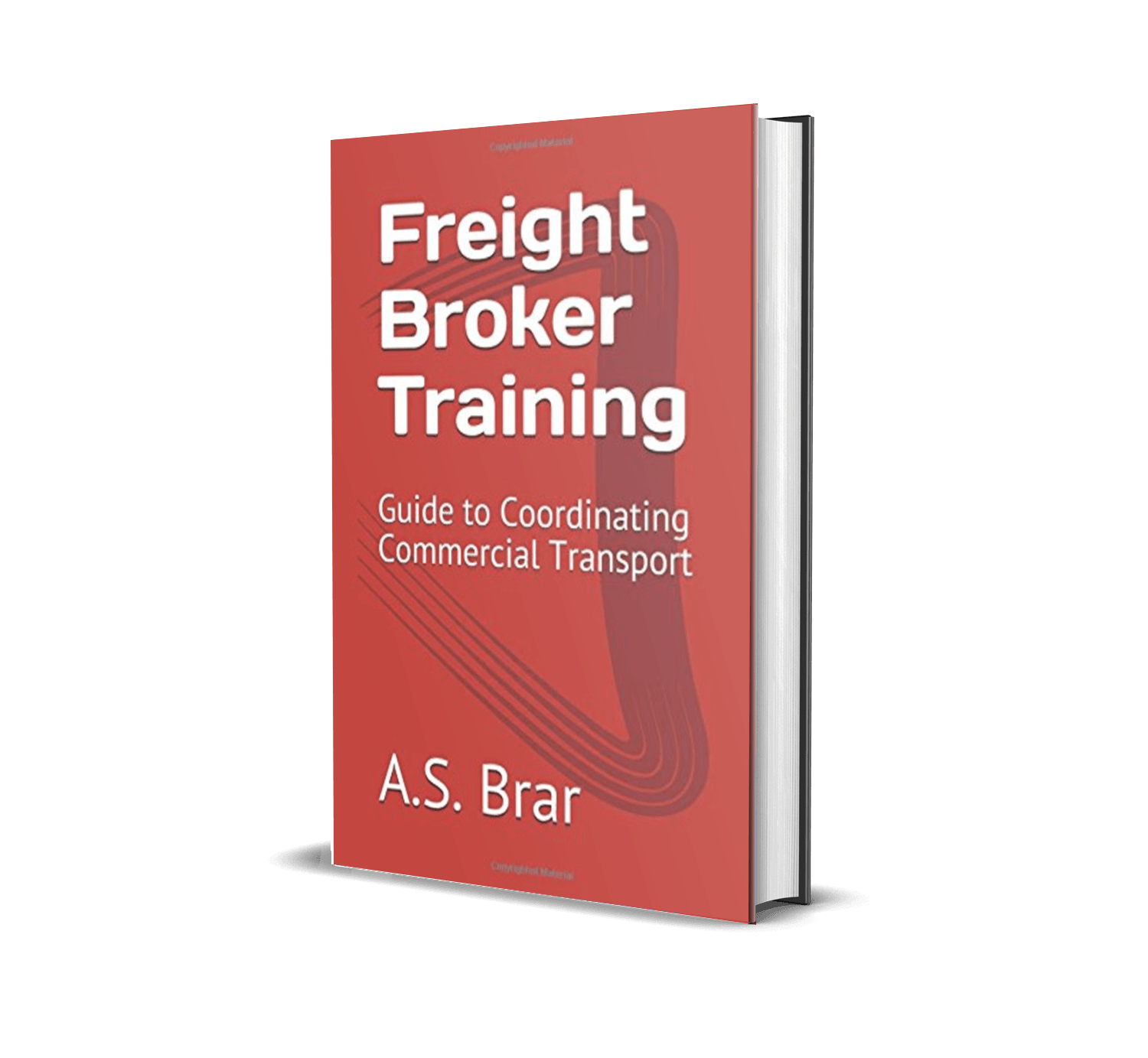
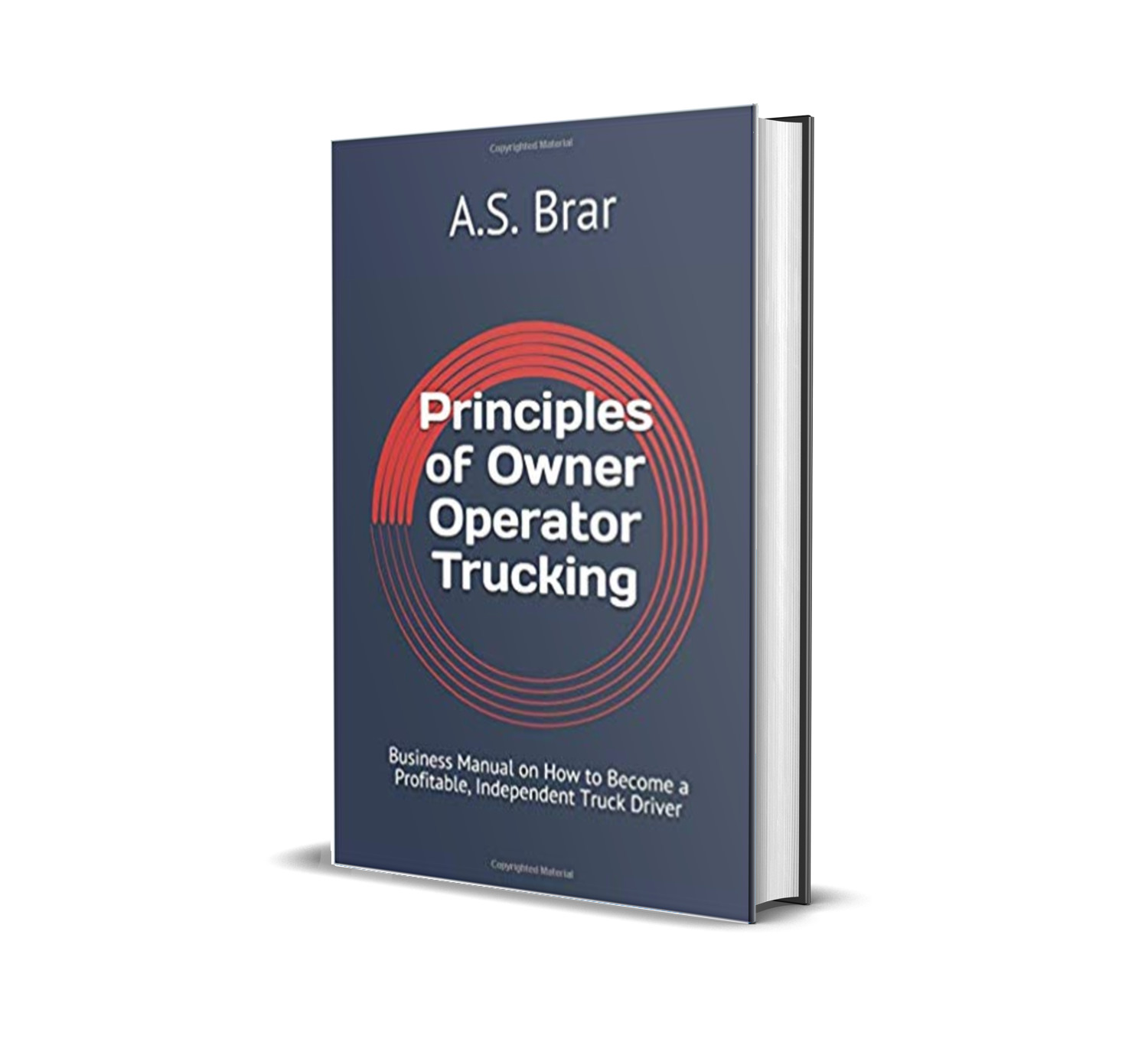
You might want to edit your page; you keep calling removable gooseneck trailers RNG’s when actually they are RGN’s. You’ve got the N and the G backwards.
Hello,
I am working on a Software project. I have an application for a vehicle and trailer. Is it possible to get the trailer and vehicle specifications based on Type and Manufacturer. It would help me a lot as a student.
Please feel free to call 682-240-2363.
Appreciate it if you can provide your email adress.
What’s the name of the trailer with a driver underneath, used to haul electrical pole and girder,
Pictures of the trailers would really help!!
I was thinking the same thing.
Flatbed trucks help in the transportation of heavy equipment. If you need to buy a flatbed truck visit Mac’s Trucks
pictures of these trailers would be very helpful
Flat top trailers are useful for all kinds of purposes. I appreciate what you said about specialty trailers. My friend wants to buy a flat top trailer, so I’ll help him find the best dealer in town.
We are the professional distributor of the trailer and kindly provide me your email address. I will contact you immediately.
I like what you said about knowing the dimensions of your load and the total weight. My uncle is thinking about getting a side tipper trailer for his family. It would be really nice for him to get a professional to help him find the right trailer.
Thanks for listing that flatbed trailers can carry a great load of weight. My uncle has a few machines that he needs to transport, and I want to help him find the right trailer. With that set, I’ll advise him to rent a flatbed trailer to transport his machines.
Can anyone tell me what the body styles “LG” and “ZHLG” mean on an Oregon Certificate of Title for a 1960’s Fruehauf, Pierce and/or General trailer? I’ve searched the internet to the point of frustration and I’m hoping someone can help me find the answer. Thank you.
Refrigerated trailers sound super helpful especially for those working in the food industry. Having a way to keep your food frozen despite having long-distance deliveries seem like an invaluable resource to have. I’ll have to keep that in mind if my husband and I ever start a restaurant of our own in our town. Since we’re quite far from any piggeries or butcher shops I’ll have to rent some refrigerated trailers to get food here. It’ll be good to be able to bring my husband’s authentic german cooking here for the whole town to enjoy, but for that, we’ll need our pigs to be as fresh as possible, which seems to be feasible thanks to those trailers.